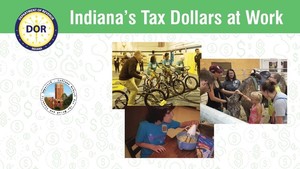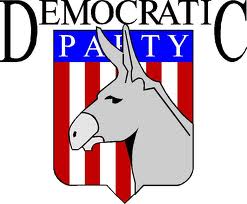|
|||||||||||||||||||||||||||||||||
|
|||||||||||||||||||||||||||||||||
|
Happenings At The Vanderburgh County Democratic Party
School of Education Receives $735,000 Grant
School of Education Receives $735,000 Grant
 August 21, 2020
The School of Education at the University of Evansville (UE) recently received a grant totaling $735,247 from the Governor’s Emergency Education Relief (GEER) Fund, which was created by the Coronavirus Aid, Relief, and Economic Security Act (CARES Act). GEER Funds were created to provide support to local educational agencies and higher education institutions to develop and improve distance learning techniques and technologies throughout the state of Indiana.
With the grant funds, the UE School of Education will focus on implementing two main initiatives: 1) a free community tutoring program for students, and 2) professional development for teachers and UE students to improve student outcomes. While working toward these goals, UE will be partnering with seven school corporations throughout Southern Indiana, including the Diocese of Evansville, Warrick County Schools, Loogootee Community Schools, North Lawrence Community Schools, Orleans Community Schools, Shoals Community Schools, and Tell City Schools. While the first preference will be given to partner schools, the grant activities will also be open to in-service teachers and students in K-12 corporations throughout Southern Indiana.
The COVID-19 pandemic caused major disruption to schools across the nation, and education systems are working diligently and creatively to meet the needs of students and families during unprecedented times. Many educators fear that the extended delay in classroom instruction could impact learning outcomes and student achievement. Using the grant, the UE School of Education will offer a free tutoring program geared toward community K-12 students. UE students and current educators will be connected with students in partner schools and other K-12 school corporations, and they will provide targeted interventions to assist in closing learning gaps. Tutoring sessions will take place via Zoom or in-person using social distancing guidelines.
Monies from the grant will also be utilized to boost in-service and UE pre-service teachers’ capacity to efficiently and effectively provide remote and virtual instruction. The UE School of Education will utilize Zoom sessions to introduce participants to the G Suite for Education, which is a suite of tools designed by Google to empower educators and students and promote innovative learning. Training sessions will focus on teaching in a Google-infused classroom, as well as instructional best practices for online and hybrid learning. After completion, participants will receive Google for Education Fundamentals Training certification.
“We are so honored to provide this support to our students and teachers, which is heavily needed after the last several months,” said Lisa Hale, assistant professor of education at UE. “The training this grant provides will not only enhance the technology-based remote learning but also improve in-person methodology once schools return to full-time classroom instruction.”
Hale commented that the grant will enhance the learning experience for students in the School of Education. Additionally, Google for Education certification will further prepare students for the classroom and provide a competitive edge when entering the workforce.
The grant-writing team was composed o staff and faculty at the University of Evansville, including Sylvia DeVault, Sharon Gieselmann, Lisa Hale, Alison Jones, Mary Kessler, Shari Millikan, and Leanne Nayden. UE also worked with alumni Rick Roll and Joe Lannon for a united team effort.
Across the state, over $61 million in GEER funding was distributed to educational agencies and institutions. The needs-based, competitive grant program was a collaborative effort among the Indiana Department of Education, the Commission for Higher Education, the Indiana State Board of Education, and the Governor’s office. Through their efforts, the grant was created to support the unique challenges associated with distance and remote learning, including device access, internet connectivity, and educator training/development.
Indiana County, City &Â MSA Employment Report
July Indiana County, City
&Â MSA Employment Report
INDIANAPOLIS (August 24, 2020) – Links to July 2020 employment data for Indiana counties, cities and MSA’s are listed below:
Employment Report (LAUS)
Labor Force Estimates for U.S., Indiana, MSAs, Counties, Cities
Ranking of Indiana Counties by Unemployment Rate
Indiana County Map with Unemployment Rates
Jobs Report (CES)
Seasonally-Adjusted Employment Table for Indiana
Non-Seasonally-Adjusted Employment Table for Indiana
Detailed Employment Listing – Statewide & MSAs
EDITOR’S NOTE: Per the U.S. Bureau of Labor Statistics (BLS), sub-state level data are not seasonally adjusted due to sampling size. For example, over the course of a year, the size of the labor force, employment and unemployment levels, and other measures of labor market undergo fluctuations due to seasonal events including changes in weather, harvests, major holidays, and school schedules. Therefore, for more accurate comparisons, data should be compared to the same month from prior years, not the previous month, as to better account for non-economic factors.
The August 2020 Indiana Employment Report will be released on Friday, Sept. 18, 2020, at 10:00 a.m. (Eastern) and the August 2020 Indiana County, City, and MSA Employment Report will be released on Monday, Sept. 21, 2020, at 12:00 p.m. (Eastern).
Indiana FSSA introduces the Hoosier Health and Well-Being Atlas
Indiana FSSA introduces the Hoosier Health and Well-Being Atlas
(The tool aggregates nearly two years of applicant data into map to help identify the most pressing needs of Hoosiers and their communities)
INDIANAPOLIS – The Indiana Family and Social Services Administration today announced the launch of a new statewide, interactive map showing the prevalence of unmet social needs throughout the state, community by community. With the data, communities can identify and prioritize emerging social needs and target services to proactively and strategically address those needs.
The information is just one example of how state agencies can answer Gov. Eric J. Holcomb’s Tuesday, Aug. 18 call to action to shape change regarding equity and inclusion. The well-being atlas will shed light on disparity data across all counties.
“This type of data, which includes age, race and education demographics, will help us uncover disparities our populations face in accessing services needed to provide for their families, seek medical care, find and keep gainful employment, and pursue a safe and healthy life,†Governor Holcomb said.
The “Hoosier Health and Well-Being Atlas†highlights two years of data volunteered by Hoosiers when they apply for state health coverage programs, food assistance or emergency cash assistance. The site launched today at www.FSSA.in.gov.
“With the information collected representing nearly 300,000 households, the Hoosier Health and Well-Being Atlas provides a dynamic view of the various challenges facing our communities and citizens,†said Jennifer Sullivan, M.D., M.P.H., FSSA secretary. “We are using this tool at the state to make sure our programs align with the real, current needs of Hoosiers and to help charitable organizations deploy their resources to address the most pressing issues at the local level.â€
In 2018, FSSA added 10 optional survey questions to the online applications for the Supplemental Nutrition Assistance Program, Temporary Assistance for Needy Families, and health coverage. The purpose was to capture information about the experiences of applicants and clients in order to help better serve them.
“This ability to examine demographic information enables FSSA, and others, to partner with local communities to work toward more equitable access to services and improved health outcomes among marginalized populations,†added Dr. Sullivan. “With a more robust understanding of racial and ethnic disparities, we will be better positioned to design, implement and evaluate policies and programs that seek to address these persistent injustices across Indiana.â€
While FSSA encourages applicants to complete the survey questions, they are optional and have no impact on eligibility determinations. About one in five applicants have completed the survey since it launched.
The 10 questions are as follows:
- In the last 12 months, did you ever eat less than you felt you should because there wasn’t enough money for food?
- In the last 12 months, has your utility company shut off your service for not paying your bills?
- Are you worried that in the next 2 months, you may not have stable housing?
- Do problems getting child care make it difficult for you to work or study? (leave blank if you do not have children)
- In the last 12 months, have you needed to see a doctor but could not because of cost?
- In the last 12 months, have you ever had to go without health care because you didn’t have a way to get there?
- Do you ever need help reading hospital materials?
- Are you afraid you might be hurt in your apartment building or house?
- During the last 4 weeks, have you been actively looking for work?
- In the last 12 months, other than household activities or work, do you engage in moderate exercise (walking fast, jogging, swimming, biking, or weight lifting) at least three times per week?
More information about how the survey was conducted:
- This survey was made available to individuals who applied online ONLY and does not represent anyone who applied in-person, by telephone, by mail, or any other method. In 2019, 80% of those who applied for SNAP, TANF, or health coverage applied online.
- Applications are filed at a household level and may represent several individuals. The application process identifies a primary contact person for the household, and that individual’s personal details are represented on the public dashboard; for example, that person’s gender, race, and education level.
- An individual who completes more than one application and surveys over any given time period is represented once, and the survey answers and demographic details are based on each applicant’s most recent responses. For example, an applicant’s age, education level, and survey answers can change over time, and the reporting reflects any such changes.
- All information is presented in aggregate to ensure that personally identifiable information is protected. To protect the privacy of individuals, data representing 20 or fewer individuals in any county will not be displayed.
Right Jab And Middle Jab And Left Jab†August 25, 2020
Right Jab And Middle Jab And Left Jab†August 25, 2020
The majority of our “IS IT TRUE†columns are about local or state issues, so we have decided to give our more opinionated readers exclusive access to our newly created “LEFT JAB and Middle Jab and RIGHT JAB† column. They now have this post to exclusively discuss national or world issues that they feel passionate about.
We shall be posting the “LEFT JAB†AND “MIDDLE JAB†AND “RIGHT JABâ€Â several times a week.  Oh, “LEFT JAB†is a liberal view, “MIDDLE JAB†is the libertarian view and the “RIGHT JAB is representative of the more conservative views. Also, any reader who would like to react to the written comments in this column is free to do so.
HOT JOBS IN EVANSVILLE
|
||||||||||||||||||||||||||||||||||||||||||||||||||||||||||||||||||||||||||||||||||||||||||||||||||||||||||||||||||||||||||||||||||||||||||||||||||||||||||||||||||||||||
|
AG Curtis Hill: Crime victims urgently need financial support from Congress
Attorney General Curtis Hill today urged Congress to adopt key changes to the Victims of Crime Act of 1984 (VOCA) that would provide essential financial support to victims of violent crimes and their families. He joined all other U.S. attorneys general in a letter to congressional leaders advocating for the changes.
The Crime Victims Fund, which was established by VOCA, is the primary funding source for victim services in the nation’s 50 states and six territories. Deposits to the fund originate from criminal fines, forfeited bail bonds, penalties and special assessments collected by U.S. Attorneys’ Offices, federal courts and the Federal Bureau of Prisons. The fund covers the expenses of crucial direct services and support for victims and survivors in the aftermath of crime, including medical care, mental health counseling, lost wages, courtroom advocacy and temporary housing.
Unfortunately, the financial health of the fund is in jeopardy. In 2015, Congress increased the cap on distributions to the fund, allowing 2.5 million more victims to receive support. But, according to the letter, while “deposits have sharply decreased in recent years due to a decline in the fines and penalties recouped from federal criminal cases, withdrawals have increased at a rapid pace.â€
In the letter, the attorneys general call on Congress to adopt changes to the fund that would stabilize its finances and provide more flexibility to grantees who provide services to victims and their families.Â
“Without action from our elected leaders, the balance of the Crime Victims Fund is projected to reach a 10-year low by next year,†Attorney General Hill said. “Now is the time for Congress to enact bipartisan changes that would replenish the health of the fund and reaffirm our commitment to supporting victims of violent crimes.â€
The attorneys general make three recommendations to promote the sustainability of the fund and to preserve access to programs and services:
-
Redirect fines and fees from corporate deferred and non-prosecution agreements to the Fund: The Department of Justice increasingly uses deferred and non-prosecution agreements to resolve corporate misconduct. The attorneys general ask Congress to redirect these deposits to the fund. About $8 billion was recovered in both 2018 and 2019 as a result of these agreements.
-
Increase the rate of federal reimbursement to states for victim compensation programs: The Crime Victims Fund currently reimburses state programs that provide financial assistance to victims at a rate of 60%, the remainder usually being funded by fines and fees in state courts. The letter recommends Congress reimburse state programs at a rate of 75%.
-
Extend the amount of time during which VOCA funds can be spent: VOCA requires recipients to spend grants within a four-year period. The attorneys general have asked Congress to extend the period of funding so that state and local organizations can better plan and predict funding for long-term services.
COVID-19 Relief Funds Available to Arts and Culture Nonprofits
IDDC/IAC CARES Act Grant
The IDDC/IAC Cares Act Grant is available to arts and culture nonprofits in Indiana. This $10 million in financial assistance comes from the CARES Act. It will provide economic support to local organizations whose normal operations have been disrupted due to COVID-19. The deadline to request funding is September 8, 2020 4:00 p.m. eastern time.
- Review frequently asked questions
- Watch a recording of the informational webinar
- Download the grant guidelines
- Start your application
The United States Regional Arts Resilience Fund will provide financial support to catalyze recovery and build resilience for arts and cultural organizations facing disruption and loss during the COVID-19 pandemic. Grants will be awarded to small and mid-sized arts organizations in the Midwest, with an intentional focus on historically under-resourced organizations and organizations representing under-resourced populations and communities. This fund will prioritize arts and cultural organizations in rural communities and organizations led by and/or serving indigenous people and people of color.
Phase 2 is focused on smaller organizations with annual budgets between $50,000 – $249,999. Nominations are now open and will be accepted until August 28. If you were nominated in Phase 1, you do not need to reapply in Phase 2.
Indiana’s Tax Dollars at Work: Indiana School for the Blind
 It’s August, which means school is back in session for most of Indiana, and the Indiana School for the Blind and Visually Impaired (ISBVI) is no exception. For this month’s Money Monday, we’ll be talking about how the ISBVI uses state tax dollars to provide quality education and more to those who have a visual impairment. It’s August, which means school is back in session for most of Indiana, and the Indiana School for the Blind and Visually Impaired (ISBVI) is no exception. For this month’s Money Monday, we’ll be talking about how the ISBVI uses state tax dollars to provide quality education and more to those who have a visual impairment.
The ISBVI is one of the largest schools in the country dedicated to teaching the blind or visually impaired. Annual enrollment is approximately 140 students in pre-school through 12th grade. An additional 350 students receive specialized instruction in their homes or local schools through ISBVI’s outreach program. Want to know more? Our Indiana’s Tax Dollars at Work communications campaign is highlighting the work of the Indiana School for the Blind and Visually Impaired throughout August. Check out our Tax Talk blog and follow us on social to see more about various state agencies throughout the year. Next up is the Indiana State Department of Health. |
















